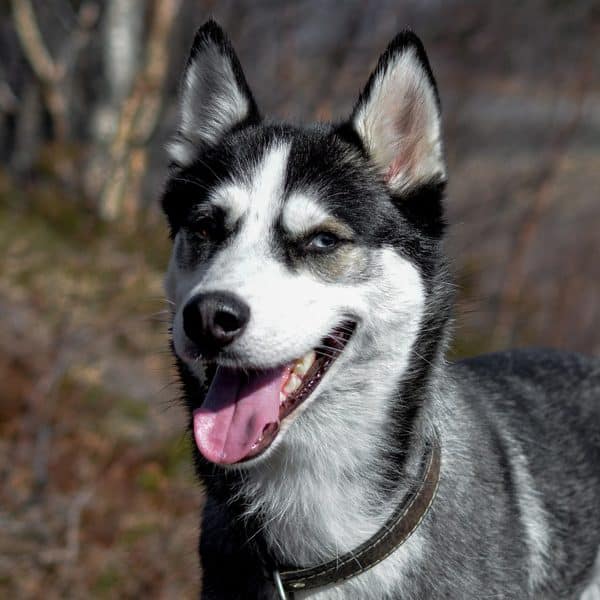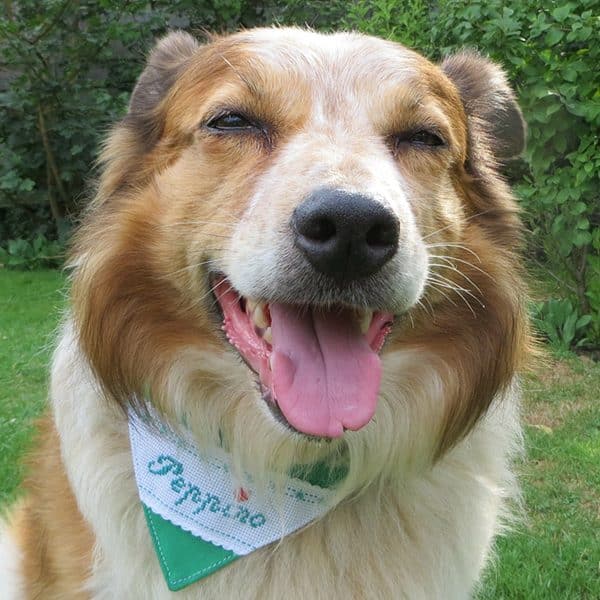Like many children of the 1980s, I grew up watching reruns of ’60s Hanna-Barbera cartoons, including Wacky Races and Dastardly and Muttley in Their Flying Machines. When it came time to research the question of whether dogs can laugh, my mind immediately conjured the wheezing, derisive laughter of Dick Dastardly’s dog, Muttley. I always found it hilarious that the dog would laugh at his friend when another devious scheme failed, since they were on the same team.
Though humans have been laughing — at each other, themselves, and at amusing anecdotes — since the dawn of time, it’s fascinating to me that laughter is still a developing field of scientific inquiry. “Gelotology,” a word which looks and sounds like it might have something to do with Jell-O or rocks, is actually the study of laughing. An interdisciplinary field involving both physiological and psychological components, gelotology only began in the 1960s.
There is still so much we don’t know about the origins and functions of human laughter. Naturally, our understanding of how — or even if — other mammals experience humor, joy, or relief through laughing is a branch of gelotological research that is still in its infancy. Much of what we do know about dogs, in particular, and laughter, has only been published in the last 15 years. Let’s see what the state of the field is in response to the following questions:
- Can dogs laugh?
- Do dogs laugh with their tails?
- Can dogs be tickled?
- How to make your dog laugh

The science of dog laughter is still a developing field of study. (Photo by Rachael on Flickr)
Can dogs laugh?
The foundational names in the field of laughing dog research are Konrad Lorenz and Patricia Simonet. Lorenz’s Man Meets Dog (1949) was an early text that addressed whether dogs laugh. He drew on observations of the physiology of dog lips and behaviors to suggest a correlation between social activity, a dog’s lips, and panting. Lorenz posited that when the commissures — the corners of the lips — are loose and the dog begins panting rapidly, this was a rough equivalent of human laughter. He says that this pattern of physical activity is an “invitation to play,” suggesting a critical communal aspect to dog laughter, an aspect we’ll turn to next.
Beginning in 2000, Patricia Simonet’s research took a much more detailed, experimental approach. Simonet’s work on dog vocalizations, particularly in social or play situations, has revealed some startling results. She made numerous recordings of the sounds that dogs make during play, taking special note of a “forced breathy exhalation through the mouth.” She found that dogs make this sound even when they are not playing hard enough to warrant panting. Through comparative analysis of these two sounds, she discovered the “dog laugh” to have different sonic content, with spikes in the audio, than simple panting, which is flatter.

This dog is laughing at our efforts to decode his behavior. (Photo via Pexels)
In 2005, the real breakthrough in Simonet’s research came in partnership with a shelter in her home of Spokane, Washington. She observed that shelter dogs were experiencing a great deal of stress in isolated kennels, and that their behavioral patterns became a kind of long-term depression the longer they remained. Simonet hypothesized that lack of engagement, community, and added stress made them less likely to be adopted. Could simply hearing a recording of dogs “laughing” make a difference to these dogs?
Playing her recordings to 120 shelter dogs over the course of six weeks, Simonet found that, even in isolation, dogs who heard the sounds of “dog laughter” stopped what they were doing. Almost all of the dogs went quiet immediately. Many dogs turned physically toward the source of the sound, others were observed to “smile,” while still others began to engage in play behaviors. The younger the dog, the more likely it was to start making those “breathy exhalations,” or dog laughs, themselves. From these results, Simonet theorized that regular exposure to these sounds might help shelter dogs minimize repetitive stress behaviors and time spent in shelters.
Do dogs laugh with their tails?
Among the “play behaviors” Simonet’s study tracked were loosening lips, bowing (paws forward, head down, rear end up), boxing (playfully patting with the fore paws), and tail wagging. Humans accompany laughter with any number of physical actions and reactions. These range from closing our eyes or tilting our heads back, to doubling over or shedding tears, and many more besides. Simonet’s work attempted to track physical actions along with the heavy breathing that typifies dog laughing.
Animal behaviorist Marc Bekoff calls these supporting behaviors, like play bows and tail wags, examples of canine metacommunication. Similar to the way that one human might cover their mouth when they laugh, and another might open it wide, metacommunication comprises any non-verbal cue that is related directly to what’s being audibly expressed. Since tail position and height are each metacommunicative for dogs, Simonet’s work was particularly interested in dogs wagging their tails on a level with their bodies, since that is accepted as a signal of relaxation and comfort. Tail wagging is not an equivalent of what we think of as dog laughter, but it may well accompany it in some dogs.
Can dogs be tickled?
To a dog, tickling is more of an annoyance than a way to conjure laughter. In the first place, these are imprecise, human-centric terms. If dogs do laugh, they don’t do it in the same ways or for the same reasons as we do. The same goes for dog tickling. My own dog will often raise one of her forelegs to be scratched in her armpit area. It doesn’t tickle her in the way the same action does to a human child.

Is this dog laughing with you or at you? More research is needed! (Photo via Pixabay)
The sensitivity to touch works differently for dogs. That goes for the belly when a dog rolls onto their back. When I start giving my dog a belly rub, she kicks me away with one or both of her hind legs. So yes, you can physically tickle a dog, but it will not provoke even a dog’s unique kind of laughter in response.
How to make your dog laugh
Dr. Stanley Coren, noted dog behavior aficionado and respected author, has detailed his own efforts to mimic the dog laugh. Following on from Simonet’s awkward transliteration of dog laughter, Coren has, through trial and error, learned to approximate with his own mouth and breathing, the sounds that dogs make when they laugh. This is something you can try at home for fun with your own dogs!
For her own part, the star of this essay, Patricia Simonet, passed away in 2010. Not long after, Spokane County named its off-leash dog park Patricia Simonet Laughing Dog Park in her memory. For someone whose work on the science of canine gelotology was aimed at getting dogs out of shelters and into homes where they could be fully functioning social animals, it is a happy tribute.
The post Do Dogs Laugh? appeared first on Dogster.
No comments:
Post a Comment